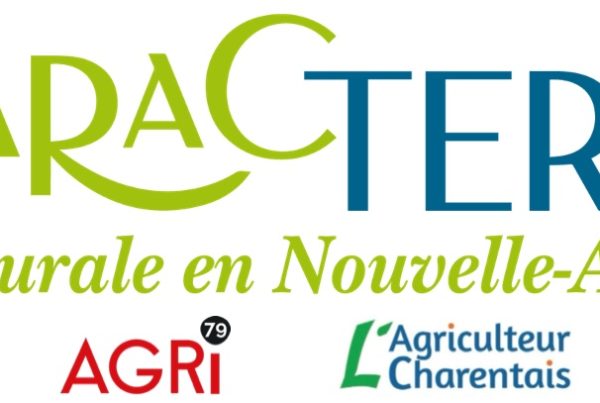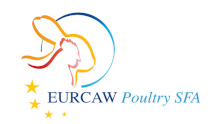Document type : article published in GoodPlanet mag'
Author: Louise Chevallier
Preview: Inspired by the model of the mobile abattoir that travels the Swedish countryside, Emilie Jeannin set up France's first on-farm cattle slaughter facility 3 years ago. Between August 2021 and February 2023, Le Bœuf Ethique's mobile abattoir made its way along the roads of Burgundy. Its activities ended because it was not financially viable, despite the fact that this alternative model seemed to satisfy all the expectations of consumers and farmers in terms of animal welfare, meat quality and local supply chains. We take a look back at the challenges and obstacles involved in this landmark experiment, which has paved the way for new slaughter practices.
The advantages of on-farm slaughter
With her mobile abattoir, Emilie Jeannin has proved that a different approach to slaughtering is possible. The former livestock farmer dismisses "the central argument that industrial establishments are needed to comply with standards", she says. Taking animal welfare into account while offering meat of impeccable quality for sale "requires resources, but either it's a priority or it's not". The mobile abattoir operates with three trucks that travel from farm to farm: one for the changing rooms, washing facilities and the office for veterinary services, another for the abattoir and the last for the refrigeration unit where the carcasses are stored. The carcasses are then taken to an abattoir for storage and cutting. Animals are thus spared the stress of transport and are slaughtered in a familiar place, respecting animal welfare needs. "This system is designed so that the animal doesn't notice a thing," explains Marie-Pierre Ellies, who teaches on animal production at Bordeaux Sciences Agro and is an INRAE researcher. The absence of stress can also indirectly improve meat quality. (...)
Obstacles to success
On-farm slaughtering faces a number of challenges compared to conventional practices. It "takes more time than a normal abattoir with more staff, so they can't slaughter many animals a day, and on top of that there's the travel involved, so it's not necessarily profitable", comments Marie-Pierre Ellies. But the particular way that the mobile abattoir operates may not be the main reason for the failure of Emilie Jeannin's business. Between delays in subsidy payments, lack of government support and excessive invoicing by the abattoir, "there were a lot of problems", admits the project leader. Emilie Jeannin points out that the abattoir's performance could not be matched: temporary health approvals were obtained in 8 days and confirmed after 6 months, in contrast to other organizations which take years to obtain this, and sales reached 1,100,000 euros in 13 months(...) "It's not a question of saying that it's everyone's fault, but we had to admit that by offering an alternative we provoked a lot of tension and fear. There wasn't much support provided for the change, except from customers and consumers, who were there for real," says the project manager. "It was entirely thanks to the consumers that we were able to get the mobile abattoir off the ground", with support from social networks and crowdfunding platforms.
Change can be annoying
In Emilie Jeannin's view, "this alternative way of doing things was very annoying for current abattoir owners, so a lot of obstacles were placed in our way to bring down the project". The mobile received grants that amounted to only 35% of the investment required, whereas conventional businesses receive funding for 60 or even 80%. "They are in a different league ", says the entrepreneur. She points out that "conventional abattoirs are paid millions to make sure that nothing changes", although none of them would appear to have achieved the same sales figures in their first 13 months of business. "The economic side of things is a fake excuse. They didn't want it to work. It suited them that I should fail," she claims. (...)
Advice for those who want to try it again (...)
She acknowledges that "going it alone", even with the help of partners, was one of her "weaknesses", but "nobody else wanted to do it". One solution would be "to get involved in collective projects where the public authorities really put their money where their mouth is. I've learned a lot from this experience, and I think it's possible. But there's no ready-made formula, as each region has its own particularities," she explains. For Marie-Pierre Ellies, "the alternative provided by on-farm slaughtering is a great idea, but it will never be able to cope with the volumes that go through the current system". Nevertheless, the fact that it can be associated with a high quality approach means that it remains "a possibility in certain cases". The model could also work for other species, as could on-site processing when a farm has its own facilities. But "this will always raise the issue of how many farmers are interested and how many animals can be slaughtered in a day", the agronomy professor reminds us.
And if you had it to do all over again?
" If I had it to do all over again, I would," says Emilie Jeannin. "If only to prove that it was possible. She points out that "at the beginning, everyone believed that it would be technically impossible to achieve a faultless result in terms of quality, health and respect for animal welfare". Skeptics included health authorities, members of the meat industry and lobbying groups such as Interbev, and even some animal protection associations, who were concerned that controls might be less stringent. However, "they are wrong: we've proved that we did it in a way that was good, precisely, for the animals". (...)




